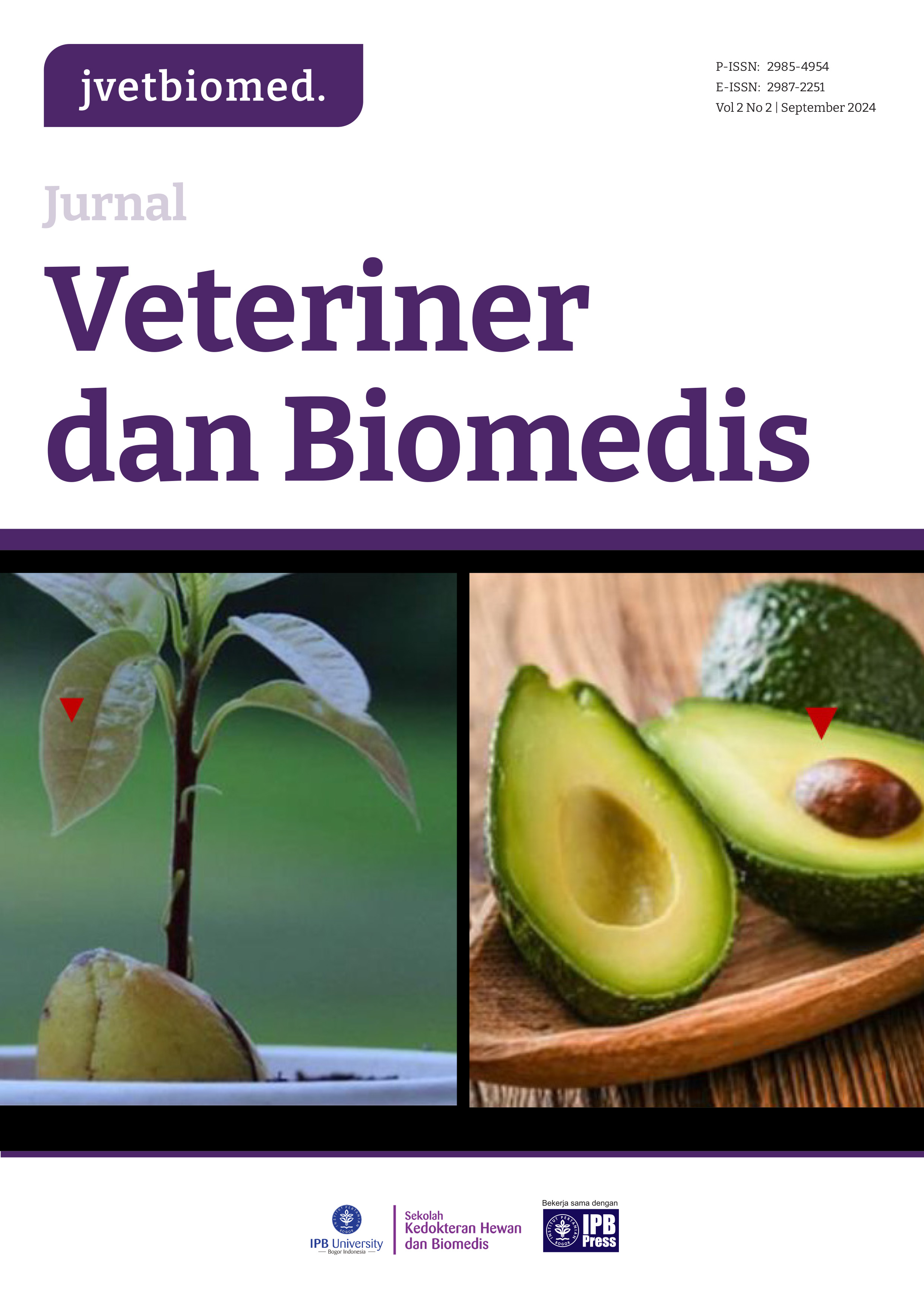Phytochemical Potential of Maggot Extract Antimicrobial for Escherichia Colisp. in Diabetic Ulcers of Diabetes Mellitus II
Abstract
Diabetes Mellitus (DM) is a metabolic disorder related to the relative deficiency of insulin secretion, affecting the metabolism of carbohydrates, fats, and proteins, leading to chronic hyperglycemia caused by genetic and environmental factors. This condition significantly impacts the quality of life, primarily due to complications such as diabetic ulcers. Diabetic foot ulcers are non-traumatic lesions on the skin of the foot in individuals with diabetes mellitus, resulting from repeated pressure and associated diabetes complications related to peripheral neuropathy. The healing of wounds can be facilitated through Maggot Debridement Therapy, a treatment involving the application of maggots or larvae of the Black Soldier Fly (BSF). These maggots secrete enzymes that dissolve necrotic tissue, disinfect the wound, and stimulate wound healing. This study aims to analyze the effectiveness of methanol extract from Maggot (H. illucens) in inhibiting the migration of bacterial cultures and its potential as an antimicrobial agent against bacteria found in diabetic foot ulcers (DM II). The maggot was extracted using the maceration method with methanol, and its content was determined through phytochemical and GC-MS tests. The antibacterial test was conducted using E. coli. Phytochemical testing revealed that the methanol extract of maggot contains saponin, as evidenced by the formation of foam after the addition of distilled water and agitation. The results of the antibacterial test indicated that the methanol extract of Maggot (Hermetia illucens) can inhibit the growth of Escherichia coli bacteria concentration of 12,5%.
References
[2] Fauziah, I., & Anggraeni, D. N. Prevalence of Type II Diabetes Mellitus sufferers in patients at Blangkejeren City Health Center, Blangkejeren District, Gayo Lues Regency 2015-2017. JOUR.
[3] Febrianti, D.R., Khairina, N., & Alisa, P. N., 2018. Test of the antimicroorganism activity of jeriangau (Acorus calamus L.) extract against the fungus Candida albicans and the bacteria Staphylococcus aureus. Jurnal Insan Farmasi Indonesia, 2018; 1(1): 96-103.
[4] Herlambang, Buchori, D., Hidayat, P., Hem, S., dan Fahmi, M. R. Development and nutritional content of Hermetia illucens (Linnaeus) larvae (Diptera: Stratiomyidae) in oil palm cake. Jurnal Entomologi Indonesia. 2015; 7(1): 28-41.
[5] Irawan C. Vollatile Compound Analysis using GC-MS, Phytochemical Screening and Antioxidant Activities of the husk of “julang-jaling” (Archidendron bubalinum (Jack) I.C Nielsen) from Lampung,Indonesia. Pharmacogn J. 2018; 10(1):92-98.
[6] Kemenkes RI. 2018. RIKESDAS National Report 2018. Health Research and Development Agency, 483.
[7] Kistianita, A.N., Yunus, M., Gayatri, R.W. Analysis of risk factors for Type 2 Diabetes Mellitus in productive age using the Who Stepwise Step 1 (Core) approach at the Kendalkerep Community Health Center, Malang City. Prev. Indones. J. Public Heal. 2018; 3(1): 85. https://doi.org/10.17977/um044v3i1p85- 108.
[8] Kumalasari, E. dan N. Sulistyani. Antifungal activity of ethanol extract of Batang Binahong (Anredera cordifolia (Tenore) Steen.) against Candida albicans and phytochemical screening. Jurnal Ilmiah Kefarmasian. 2011; 1 (2): 51 – 62.
[9] Manarisip, G. E., Rotinsulu, H., & Fatimawali. Standardization Of Green Betel Leaf Extracts (Piper betle L.) and Antibacterial Test Against Pseudomonas aeruginosa. Pharmacon-Program Studi Farmasi. 2020; 9(1): 533–541.
[10] Muflihunna, A., Syarif, S., & Mursyid, A.M. Formulation and evaluation of apple peel (Phyrus mallus L) ethanol peel-off gel mask as an antioxidant. Jurnal Kesehatan. 2019; 35–44.
[11] Putra, A. T. M., A. Salim, R. N. Fauziah, dan N. Alzana. Pemanfaatan senyawa antimikrobial maggot (Hematia illuecens) sebagai agen bakteriolitik gram negatif. Prosiding Seminar Nasional Teknologi Agribisnis. 14-15 Juni 2022, Purwokerto, Indonesia. 2022; 813-819.
[12] Riset Kesehatan Dasar (Riskesdas). 2018. Indonesian Ministry of Health Research and Development Agency in 2018. http://www.depkes.go.id/resources/download/infoterkini/materi_rakorpop_2018/Hasil%20Riskesdas%202018.pdf.
[13] Rizqiyah H, Soleha TU, Hanriko R, Apriliana E. Diabetic ulcer bacterial patterns in diabetes mellitus sufferers at RSUD Dr. H. Abdul Moeloek. Majority. 2020; 9(1): 128–35.
[14] Roza, R. L., Afriant, R., & Edward, Z. Risk factors for the occurrence of diabetic ulcers in Diabetes Mellitus patients treated outpatient and inpatient at RSUP Dr. M. Djamil and RSI Ibnu Sina Padang. Jurnal Kesehatan Andalas. 2015; 4(1): 243–248. https://doi.org/10.25077/jka.v4i1.229.
[15] Sample Registration System (SRS) 2014. Indonesia Sample Registration System - Deaths 2014, accessed 31 November 2023, available at: http://ghdx.healthdata.org/record/indonesia-sample-registration-systemdeaths-2014.
[16] Saputera, M.M.A. Test the effectiveness of the ethanolic extract of Batang Bajakah Tampala (Spatholobus littoralis Hassk.) on wound healing time. Jurnal Ilmiah Ibnu Sina, 2018; 3(2), 318-327.
[17] Fadholly, A., Ansori, A.N.M. & Sucipto, T.H. (2020). An overview naringin: potential anticancer compound of citrus fruit. Research Journal of Pharmacy and Technology, 13(1), 5613-5619.
Copyright (c) 2024 Fariz Jordan Fadillah Fariz

This work is licensed under a Creative Commons Attribution 4.0 International License.







